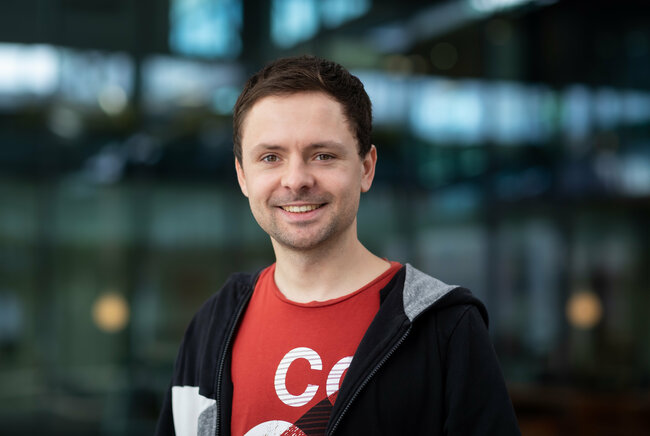Ultracold electron packets that break the picosecond barrier
Tim de Raadt defended his PhD thesis at the Department of Applied Physics and Science Education on January 9th.

A method to produce ultrashort, ultracold electron packets could improve the resolution of electron-based imaging methods. Imaging techniques such as ultrafast electron diffraction and microscopy use short electron packets to probe the structural dynamics of matter at atomic length and timescales. The resolution of these methods could be boosted by using colder and shorter electron packets. For his PhD research, Tim de Raadt worked on improving a next generation source capable of making ultracold electron packets.
How to make electron packets
To produce electron packets, you need to have a suitable source. In his research, Tim de Raadt considered a source that uses a cold cloud of rubidium atoms which is formed in a so-called magneto-optical trap using laser cooling at a region where four laser beams overlap.
These atoms in this region are then ionized using an additional laser. This photoionization process releases electrons with temperatures of about 20 degrees above absolute zero, which is about a hundred times colder than typical electron sources. These electrons are subsequently accelerated to produce the electron packets.
Stability improvement
The stability of the produced electron beam was improved drastically in de Raadt’s research, allowing the source to be continuously operated for a day.
This is a big step in transitioning the ultracold electron source from an experimental demonstration to a usable instrument. The improvements in the stability of the electron packets in terms of beam energy and pointing allowed for new sensitive measurements over many hours.
Packet study
In one of these measurements, the packet duration was studied. As the packet exits the accelerator, the packet duration starts to decrease until it is minimal at a location known as the self-compression point, due to the typical way in which the packets are accelerated.
The packet duration at this location was measured to be as short as 0.735 picoseconds (ps), two orders of magnitude shorter than the previous record of 25 ps. This extremely precise measurement was achieved by shooting a very intense femtosecond laser pulse onto the electron packet. When the laser pulse hits the electrons, it can scatter them out of the packet, which is called ‘ponderomotive scattering’.
With a electron camera at the end of the beamline, de Raadt and his collaborators could observe the electrons that have been kicked out of the packet as two stripes. If the laser pulse is shot onto the electron packet too soon or too late, they would not hit each other and therefore the desired outwards electron scattering was not observed.
Packet duration
In addition, de Raadt determined the electron packet duration by measuring for how long the electrons can be scattered, while slowly changing the delay time between the firing of the laser pulse and the electron packet. In this way the time structure of the electron packet was reconstructed.
By comparing the measured time structure to computer simulations of the photoionization process, de Raadt showed that the minimum bunch duration was set by the atomic photoionization process itself.
Moreover, by structuring the laser light used in the photoionization process, the time structure of the electron packets was manipulated. In this way, a train of 3 consecutive electron packets was produced and measured, demonstrating control over the time distribution of the ultracold electron source.
The findings from de Raadt’s research are a very important step towards the dream of single-shot imaging of protein structures at the atomic level with a single picosecond exposure time. In the future, this could be used to make movies of protein folding processes in real-time.
Title of PhD thesis: The ultracold electron source: from experiment to instrument. Supervisors: O.J. Luiten and J.G.H. Franssen.
Media contact
Latest news


![[Translate to English:] [Translate to English:]](https://assets.w3.tue.nl/w/fileadmin/_processed_/e/0/csm_BvOF%202019_1031_BHF%20license%20TUe%20ILI%20copy_8a50884392.jpg)